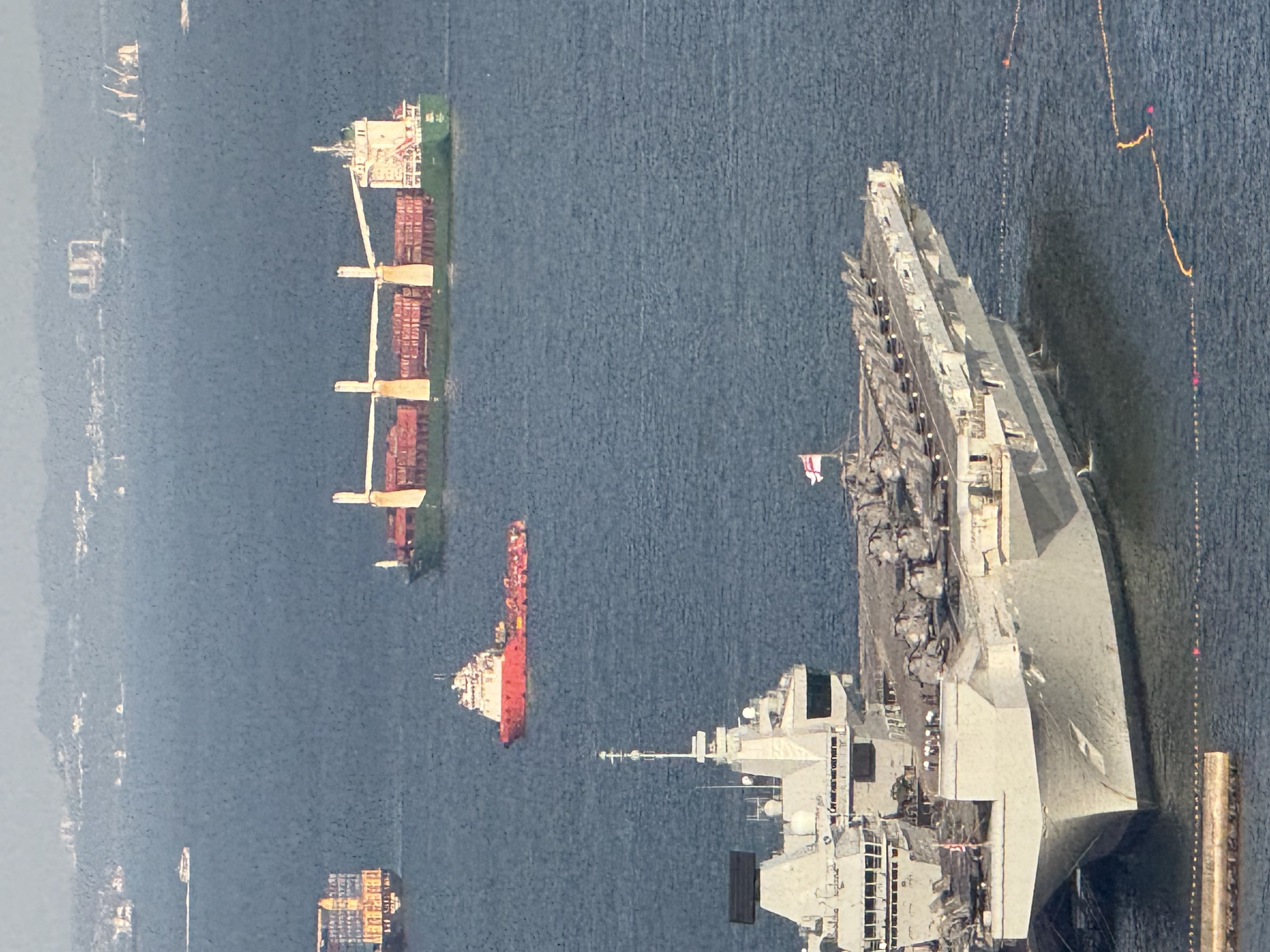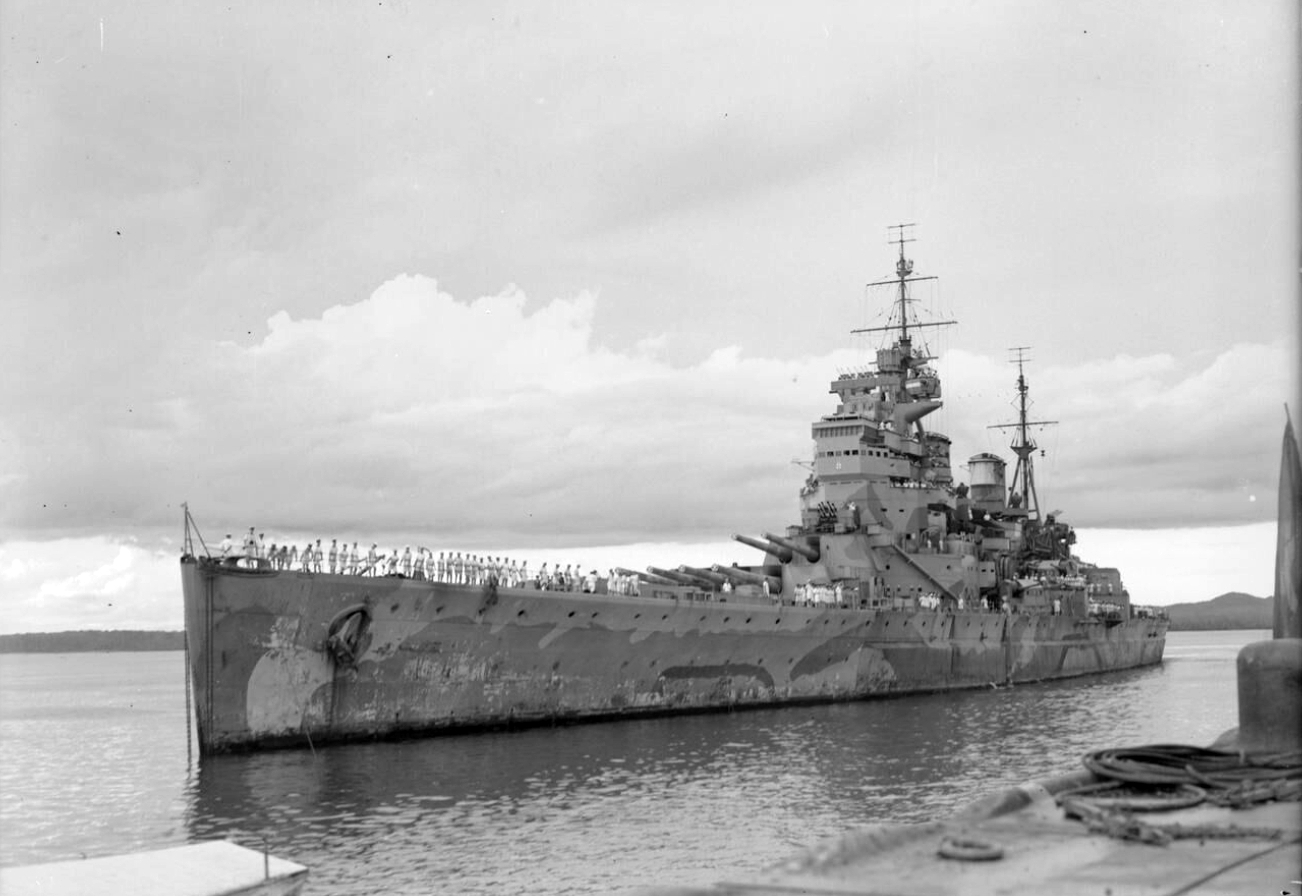HMS Prince of Wales (R09)
arrived in Singapore on the 23 June 2025,
docking at the Marina Bay Cruise Centre.
Many remember the last visit by a ship bearing her name,
HMS Prince of Wales (53), doomed to be sunk a few days later on 10 Dec 1941 as
Force Z
was effectively wiped out by Japanese aircraft.
In 2025, we are at an equally momentous turning point in military doctrine. Will the the new HMS Prince of Wales weather the storm?

The loss of the battleship HMS Prince of Wales (53) and her companion, the battlecruiser HMS Repulse, in just a matter of hours drove home the lesson that strategic advantage at sea had decisively shifted from the battleship to the air.
This was the same lesson painfully taught the US just a few days earlier with the Dec 7th attack on Pearl Harbor, and ironically demonstrated by the British themselves a month before with the Swordfish attack on the Italian fleet at Taranto.
This was a turning point in military doctrine that set the blueprint for much of the rest of the Pacific War.

In 2025, the aircraft carrier HMS Prince of Wales (R09) represents Britain’s continued commitment to the strategy of the Carrier Strike Group. Her main air capability comprises the Lockheed Martin F-35B fighter jets, with AgustaWestland Wildcat HMA2 and AgustaWestland Merlin HM2/HC4 helicopters.
HMS Prince of Wales (R09) was commissioned in 2019, and Operation Highmast is only her second major exercise. But is she already on the wrong side of another turning point of doctrine, just as her namesake was 84 years ago?
The world of 2025 looks very different from 2008 when she was ordered. Russia invaded Ukraine and started a very hot war that is not only showing the limits of nuclear deterrence, but that the battlefield is now ruled by drones. The UK left the EU, and the Trump administration has called into question its support for NATO and Ukraine, while continuing the US obsession with a threat from China.
We have seen two significant effects on the zeitgeist:
- A dramatic shift towards uncrewed and autonomous combat systems
- Questioning the wisdom of relying on the US as an all-weather ally. Many are already making moves to “de-risk” the control and supply of military technology from US dependence. For example, Portugal is re-considering its planned F35 purchase.
There was perhaps no better time for the UK to release its latest Strategic Defence Review.
While it remains steadfast in its commitment to the US as a strategic partner, indeed recommending to
double down on both pillars of the AUKUS agreement,
many of the recommendations reflect the dramatic re-centering of the role of autonomous and uncrewed systems, and that
Defence should also learn from Ukraine’s extraordinary experience in land warfare, drone, and hybrid conflict.
It foreshadows a significant shift in the role of the aircraft carrier
Carrier strike is already at the cutting-edge of NATO capability but much more rapid progress is needed in its evolution into ‘hybrid’ carrier airwings, whereby crewed combat aircraft (F-35B) are complemented by autonomous collaborative platforms in the air, and expendable, single‑use drones.
Specifically it recommends that:
The Royal Navy must continue its transformation in the skills, equipment, and ways of operating needed for the 21st century maritime domain as part of an Integrated Force. This should include:
- Moving to a ‘hybrid’ carrier airwing, comprising crewed combat aircraft, autonomous collaborative platforms in the air, single-use drones, and, eventually, long-range missiles capable of being fired from the carrier deck.
- Rapid evolution of anti-submarine warfare through the integration of underwater, surface, and airborne drones (including Protector) with Type 26 frigates, P-8 maritime patrol and reconnaissance aircraft, and SSN attack submarines.
- Rapid evolution of mine-hunting to be delivered with autonomous platforms.
- Exploring possible development from a Type 45 destroyer to a minimally crewed or autonomous air dominance system that could integrate directed energy weapons and enable better connectivity to other assets within the UK’s Integrated Air and Missile Defence system.
So while the aircraft carrier HMS Prince of Wales (R09) is not yet obsolete, one may expect dramatic changes in the way it is equipped and fought to be in the wind. Perhaps a refit when it returns from the Pacific at the end of Operation Highmast?
More references:
- https://www.scmp.com/week-asia/politics/article/3315502/uk-soft-power-display-singapore-anchors-marina-bay-skyline-berth
- https://www.nationalreview.com/photos/hms-prince-of-wales/
- https://www.gov.uk/government/publications/the-strategic-defence-review-2025-making-britain-safer-secure-at-home-strong-abroad